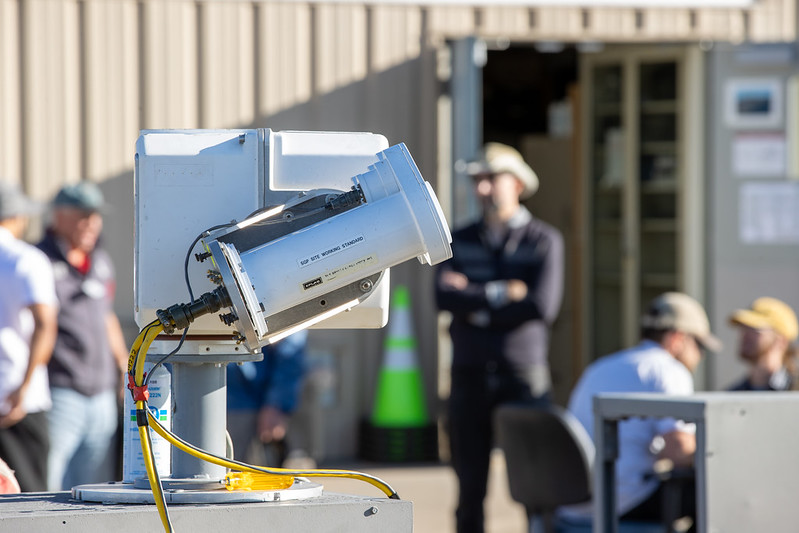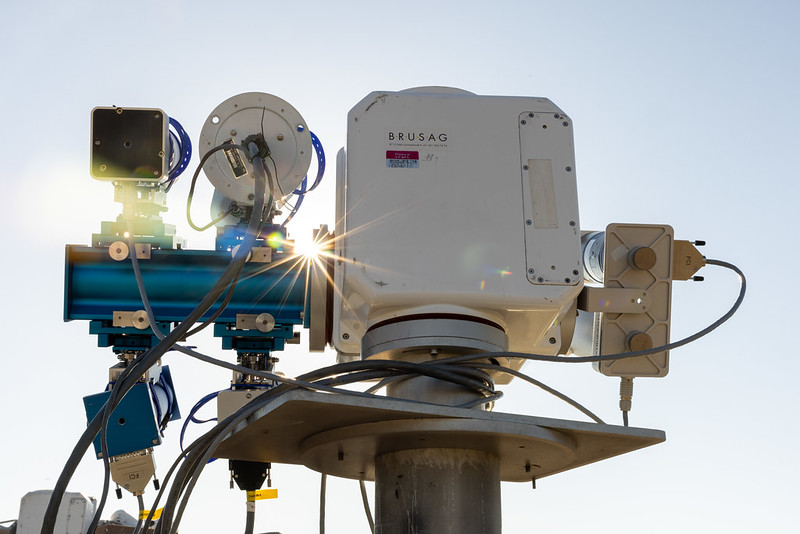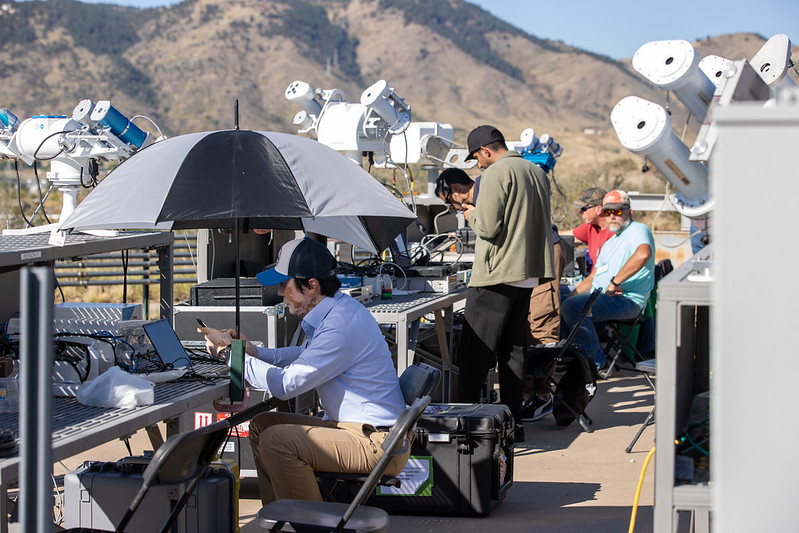Soak Up the Sun: ARM Staff Participate in Pyrheliometer Comparisons
Published: 18 November 2024
Event in Colorado helps participants calibrate reference instruments to world standard

From September 21 to 27, 2024, groups of scientists and engineers from around the globe, including personnel from the Atmospheric Radiation Measurement (ARM) user facility, gathered at the National Renewable Energy Laboratory’s (NREL’s) Solar Radiation Research Laboratory on South Table Mountain in Golden, Colorado, for the 24th NREL Pyrheliometer Comparisons (NPC).
While Colorado is a destination for many people, NPC’s participants do not just come for the stunning views and clear skies. As the North American leader in comparisons of pyrheliometers, which are radiometers that measure direct (beam) solar irradiance, NREL keeps its reference instruments calibrated directly to the World Radiometric Reference and World Infrared Standard Group. NREL is also where ARM’s broadband radiometer mentors are based.

Since 1996, NPC has been a gathering place for people from across the globe to calibrate their reference instruments to the world standard. Affectionately referred to as the “sun nerds convention,” NPC serves as a World Meteorological Organization regional comparison for maintaining traceability, which is the ability to trace your measurement back to a standard source that is common to everyone.
NPC hosts participants who seek compliance with the International Organization for Standardization requirements for interlaboratory calibrations.
Participants set up their instruments on the top of South Table Mountain and, beginning at sunrise, start taking solar irradiance measurements in groups of 49 observations at 30-second intervals.
Researchers at the Solar Radiation Research Laboratory analyze the data to provide participants with a ratio of their instrument’s measurement to the NREL reference group, allowing them to calibrate their instruments to the World Radiometric Reference. Maintaining this traceability allows participants to take their instruments back to their organizations and continue conducting and supporting solar resource assessment and atmospheric and climate research with the assurance that their measurements are aligned with the world standard.
Precise Measurements for the ARM Community

ARM technicians James Martin and Jim Stow participated in this year’s NPC along with recently retired ARM staff member Craig Webb to maintain the user facility’s traceability of radiometric measurements. This supports ARM in closing the gap between radiative transfer models and solar irradiance measurements.
This was Martin’s fourth NPC and Stow’s first. The ARM group brought two solar trackers in addition to two cavity pyrheliometers, which are precision instruments that measure the total power of electromagnetic radiation. ARM uses these instruments during the spring and summer at the Southern Great Plains atmospheric observatory in Oklahoma to calibrate ARM’s pyrheliometers and pyranometers, which are radiometers that measure total direct and diffuse (sky) solar irradiance.
“NPC is essential for (ARM) and its efforts in ensuring traceability of the ARM radiometers to the World Radiometric Reference,” says Martin.
Held in four out of every five years, NPC helps staff ensure that they are collecting the most precise data possible for ARM, adds Stow.
ARM staff also participate in the International Pyrheliometer Comparison every five years in Davos, Switzerland. It is hosted by the Physical Meteorological Observatory/World Radiation Center. The next international event is provisionally scheduled from September 22 to October 10, 2025.
Editor’s note: This article was adapted from an NREL news feature by Emily Mousel.
Keep up with the Atmospheric Observer
Updates on ARM news, events, and opportunities delivered to your inbox
ARM User Profile
ARM welcomes users from all institutions and nations. A free ARM user account is needed to access ARM data.


















